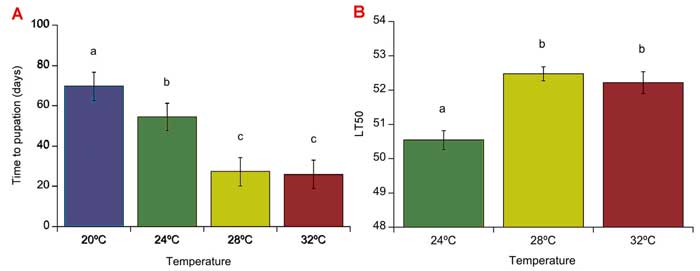| Tweet | Follow @co2science |
Paper Reviewed
Oms, C.S., Cerdá, X. and Boulay, R. 2017. Is phenotypic plasticity a key mechanism for responding to thermal stress in ants? The Science of Nature 104: 42, DOI: 10.1007/s00114-017-1464-6.
Writing as background for their work, Oms et al. (2017) note that "predicting species' responses to global warming is one of the major challenges in ecology and evolutionary biology." If they are unable to acclimate, genetically adapt or modify their distributional ranges, for example, they will likely go extinct.
As ectotherms, the physiological performance of ants depends on environmental temperatures, which strongly influence their behavior, ontogeny and ecology. Thus, ants may be particularly sensitive to global warming, especially thermophilic species that presently live in hot temperature environments. Phenotypic plasticity, in contrast, may be the most relevant coping mechanism ants possess to counter threats posed by rising temperatures/global warming.
To test the above hypothesis, Oms et al. collected 57 colonies of the thermophilic ant species Aphaenogaster senilis from Doñana National Park (southwest Spain). Ants from the 57 colonies were divided into 72 experimental groups and kept in environmental chambers at 20, 24, 28 or 32°C, where they examined the impact of temperature on development speed in larvae and the thermal resistance of the ensuing adults. And what did that examination reveal?
In the words of the authors, "higher rearing temperatures enhanced developmental success and reduced both developmental duration and callow size." Higher rearing temperature also produced ants that were more thermoresistant; ants reared at 28 and 32°C had half-lethal temperatures that were 2°C warmer than those of ants reared at 24°C (see Figure 1).
The above findings, in the words of Oms et al. show that "A. senilis has a tremendous capacity to adjust its thermal resistance," which "developmental plasticity could provide a quick and relatively straightforward solution to climate change," given that "only one generation is necessary to respond to changes in ambient temperatures." Thus, it would appear that the phenotypic plasticity of this species of ant will allow it to successfully tolerate future global warming.

Figure 1. (Panel A) Time to pupation for workers reared at four different temperatures and (Panel B) half-lethal temperatures (LT50; °C) for callow workers reared at three different temperatures. The different letters indicate significantly different means (P < 0.05). Adapted from Oms et al. (2017).




